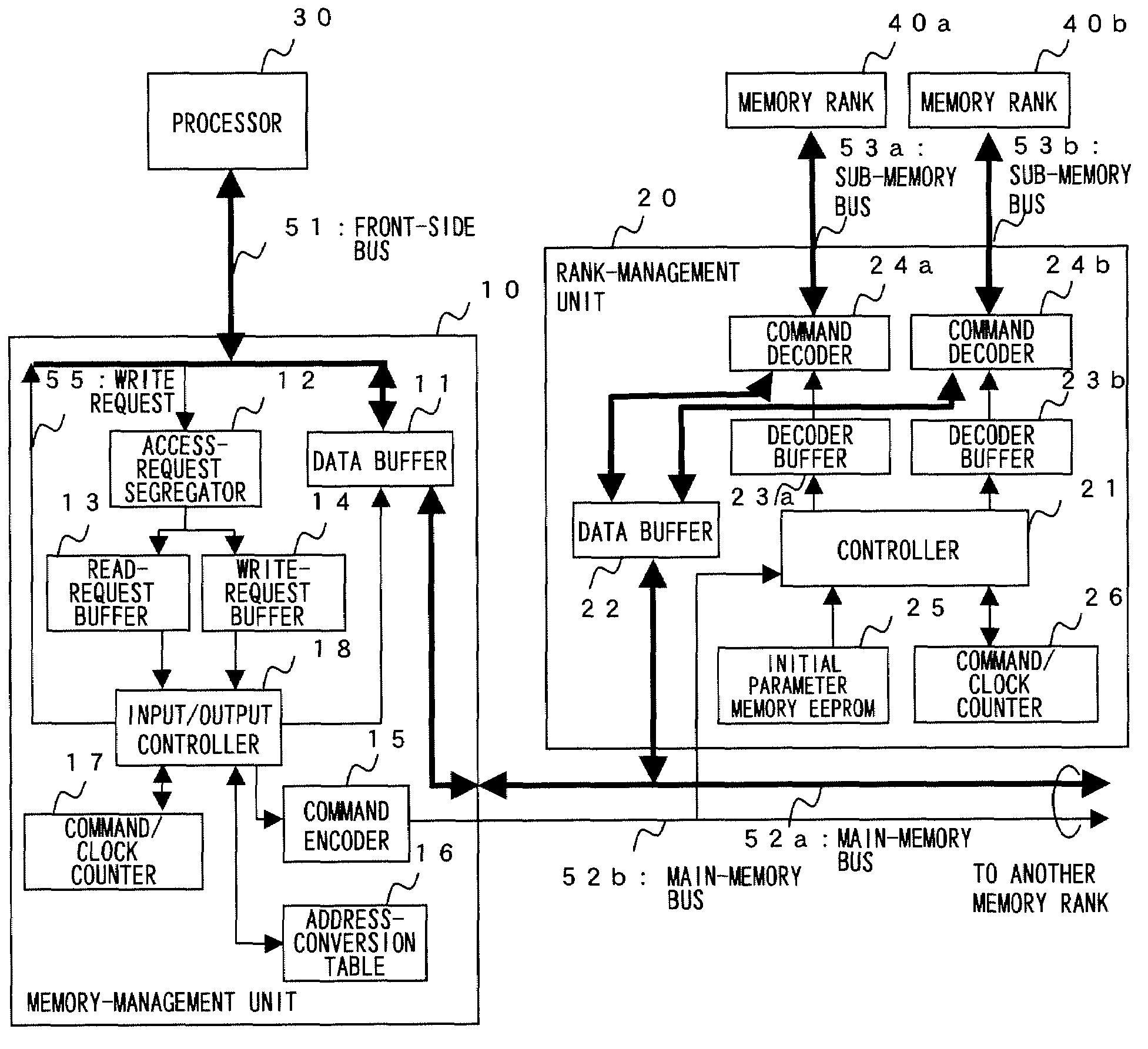Memory control device
a memory control and memory technology, applied in the direction of memory adressing/allocation/relocation, digital computers, instruments, etc., can solve the problems of difficult to employ interleave-access methods, difficult become extremely complicated to achieve low-latency memory access with high throughput, improve bus utilization efficiency, and reduce read/write time.
- Summary
- Abstract
- Description
- Claims
- Application Information
AI Technical Summary
Benefits of technology
Problems solved by technology
Method used
Image
Examples
Embodiment Construction
OF THE INVENTION
[0043]FIG. 1 is a block drawing showing the construction of the memory-control device of an example of the present invention. In FIG. 1, the memory-control device comprises: a memory-management unit 10 that is connected to a processor 30 via a front-side bus 51; and a rank-management unit 20 that connects to memory ranks 40a, 40b via sub-memory buses 53a, 53b, respectively. The memory-management unit 10 connects to the rank-management unit 20 in memory-module units or rank units via the main memory buses 52a, 52b without directly connecting to the memory ranks 40a, 40b. Here, main memory bus 52a is a bus that transmits data, and main memory bus 52b is a bus that transmits instructions (commands) and addresses. In FIG. 1, an example of a stub connection is shown, however, the connection could also be a tree-type, daisy chain, etc. Also, two memory ranks are shown, however, needless to say, three or more memory ranks could be used. Furthermore, only one memory-manageme...
PUM
 Login to View More
Login to View More Abstract
Description
Claims
Application Information
 Login to View More
Login to View More - R&D
- Intellectual Property
- Life Sciences
- Materials
- Tech Scout
- Unparalleled Data Quality
- Higher Quality Content
- 60% Fewer Hallucinations
Browse by: Latest US Patents, China's latest patents, Technical Efficacy Thesaurus, Application Domain, Technology Topic, Popular Technical Reports.
© 2025 PatSnap. All rights reserved.Legal|Privacy policy|Modern Slavery Act Transparency Statement|Sitemap|About US| Contact US: help@patsnap.com



